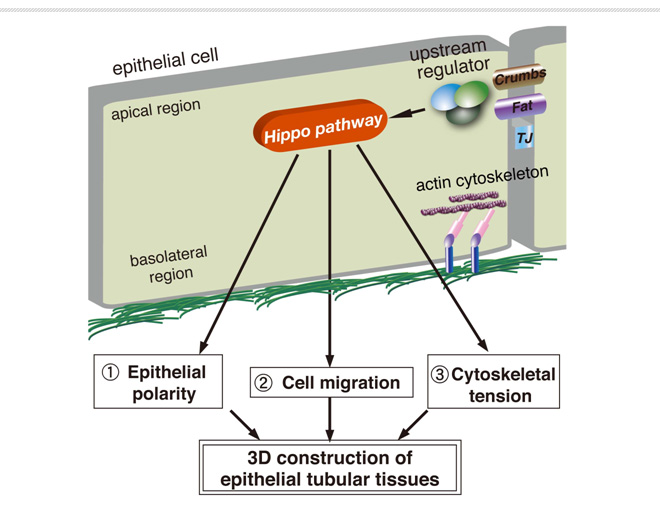|
HOME > Proposed research projects > 2012-2013: Proposed research projects 19
 2012-2013: Proposed research project 19Molecular mechanism underlying the Hippo pathway-mediated three dimensional construction of the neural tube and blood vessel system
Purpose of the Research ProjectEpithelial tubular structures comprise the foundation for the majority of organs in the body, and the proper regulation of their shapes and sizes is essential for the functional organ formation. In recent years, the Hippo signaling pathway has emerged as a central regulator of growth in epithelial tissues, but the molecular mechanism underlying the three dimensional (3D) construction of the epithelial tubular structures is poorly understood. Previously, our group carried out a morphological screening in medaka embryos. We identified the hirame (hir) mutation, a disruption of the Hippo pathway gene that causes a flattened body in which individual epithelial tubules collapse and are not properly aligned. In this project, we challenge to clarify the molecular and cellular pathogenesis of epithelial organ collapse in hir mutant by analyzing from the following standpoints: (1) regulation of cell polarity; (2) control of cell migration; and (3) regulation of cytoskeletal tension. Content of the Research ProjectIn this project, we take advantage of medaka embryos that allow live imaging of single cell behavior in an intact animal to reveal the molecular and cellular basis of the flattening of the body in hir mutant. From the standpoints described above, we will visualize the abnormalities of hir embryo in cell polarity, cell migration, and tissue tension by combining time-lapse confocal imaging with useful fluorescent probes. Expected Research Achievements and Scientific SignificanceOur future understanding of how the Hippo signaling controls 3D construction of epithelial tubules will give a strong impact on the development of regenerative medicine which aims to facilitate 3D organ formation.
|








